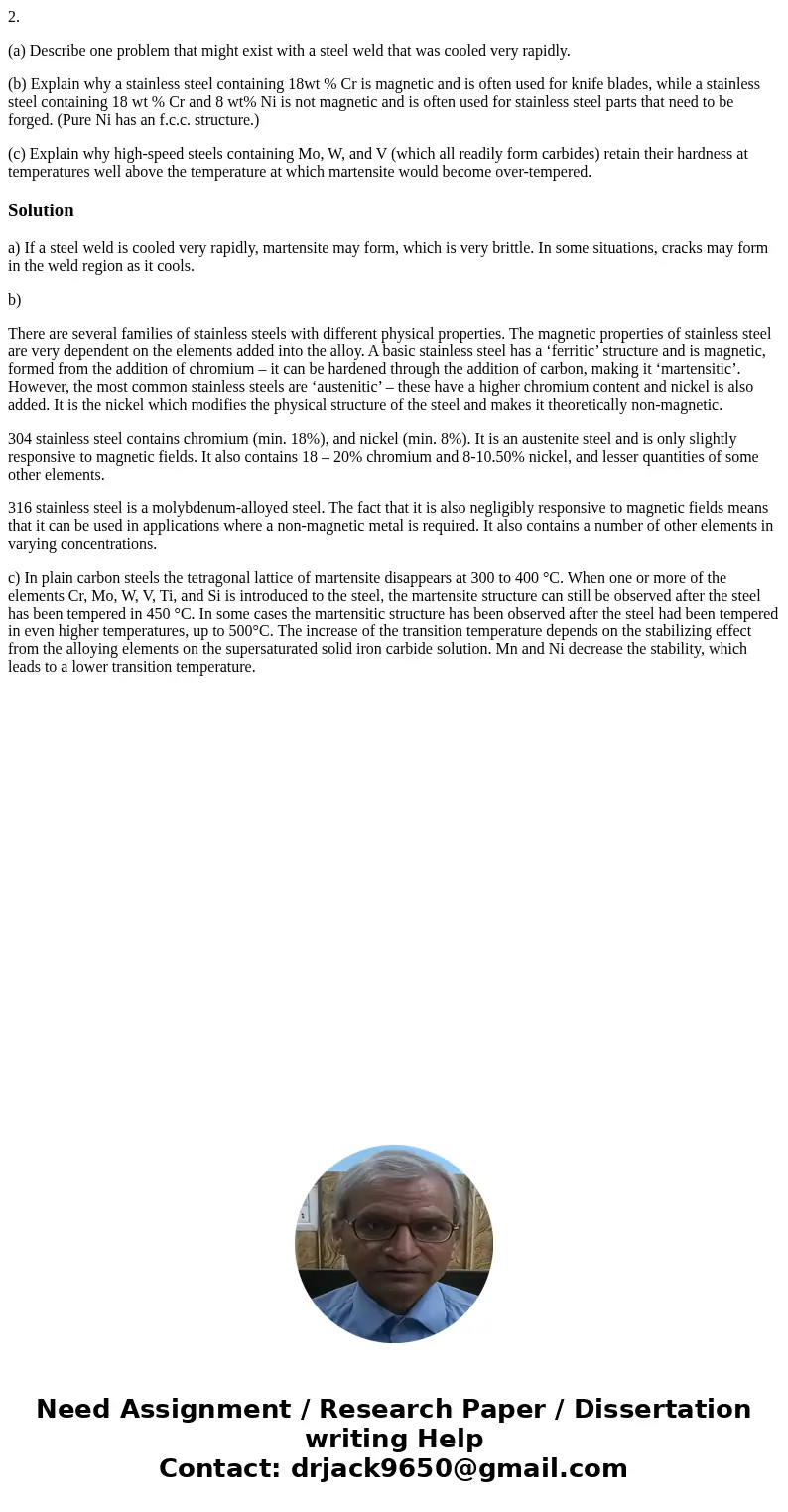2 a Describe one problem that might exist with a steel weld
2.
(a) Describe one problem that might exist with a steel weld that was cooled very rapidly.
(b) Explain why a stainless steel containing 18wt % Cr is magnetic and is often used for knife blades, while a stainless steel containing 18 wt % Cr and 8 wt% Ni is not magnetic and is often used for stainless steel parts that need to be forged. (Pure Ni has an f.c.c. structure.)
(c) Explain why high-speed steels containing Mo, W, and V (which all readily form carbides) retain their hardness at temperatures well above the temperature at which martensite would become over-tempered.
Solution
a) If a steel weld is cooled very rapidly, martensite may form, which is very brittle. In some situations, cracks may form in the weld region as it cools.
b)
There are several families of stainless steels with different physical properties. The magnetic properties of stainless steel are very dependent on the elements added into the alloy. A basic stainless steel has a ‘ferritic’ structure and is magnetic, formed from the addition of chromium – it can be hardened through the addition of carbon, making it ‘martensitic’. However, the most common stainless steels are ‘austenitic’ – these have a higher chromium content and nickel is also added. It is the nickel which modifies the physical structure of the steel and makes it theoretically non-magnetic.
304 stainless steel contains chromium (min. 18%), and nickel (min. 8%). It is an austenite steel and is only slightly responsive to magnetic fields. It also contains 18 – 20% chromium and 8-10.50% nickel, and lesser quantities of some other elements.
316 stainless steel is a molybdenum-alloyed steel. The fact that it is also negligibly responsive to magnetic fields means that it can be used in applications where a non-magnetic metal is required. It also contains a number of other elements in varying concentrations.
c) In plain carbon steels the tetragonal lattice of martensite disappears at 300 to 400 °C. When one or more of the elements Cr, Mo, W, V, Ti, and Si is introduced to the steel, the martensite structure can still be observed after the steel has been tempered in 450 °C. In some cases the martensitic structure has been observed after the steel had been tempered in even higher temperatures, up to 500°C. The increase of the transition temperature depends on the stabilizing effect from the alloying elements on the supersaturated solid iron carbide solution. Mn and Ni decrease the stability, which leads to a lower transition temperature.

 Homework Sourse
Homework Sourse